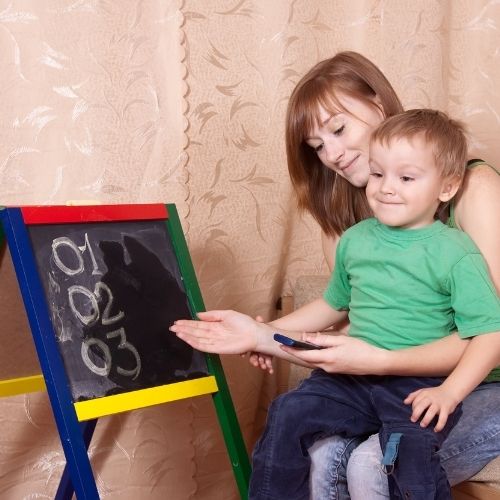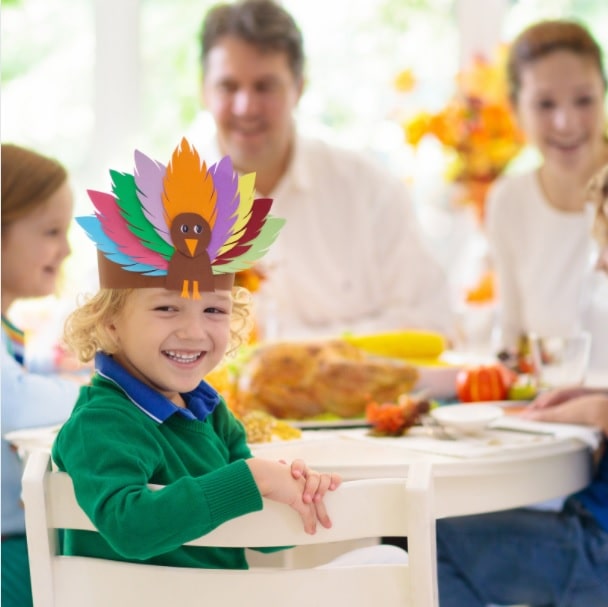Teaching children reading skills is one of the most important things a parent can do! Use these simple home reading tips to raise an early reader!
The best advice I ever received was to teach my child to read well and early. He was only 2 years old. By 5 years of age, he was reading his first Diary of a Wimpy Kid book. Unlike common notions, you can help your child to read even before they go to school. In fact, the American Association of Pediatrics recommends parents to read aloud to their kids right from infancy to facilitate early literacy skills.
Why It’s Important To Teach A Child To Read
Helping children read is one of the best gifts you could give them. Reading can transport them to different worlds and open doors to countless possibilities. Developing early reading skills also has benefits including:
Neurological Benefits:
Teaching children reading facilitates the formation of, and strengthens new and existing synaptic connections within the brain. This increases information processing and retention which, in turn, enhances the learning acquisition speed of the child.
Cognitive Benefits:
If you teach a child to read, you can spark and ignite a child’s curiosity and creativity. It gives them an opportunity to learn and demonstrate higher cognitive skills such as logical thinking, rationalizing, and problem-solving.

Psychological Benefits:
When you teach a child to read, they find reading more enjoyable and are confident in their reading skills because:
- Reading is introduced as a fun activity, rather than an academic requirement.
- Children learn to read at their own pace. There is no fear of falling short of expectations or of being compared with peers.
- Reading is a special time the child shares with the parent.
Language benefits:
Children who read early develop a
, are more articulate, and can easily communicate with others.
Academic Benefits:
Reading is the first step toward your child’s academic success. As you teach a child to read, their attention span and concentration increase. They have a thirst to explore and learn more and can comprehend and convey information faster than children with lesser reading skills.
Tips To Teach Your Child
When should we start teaching our children to read?
While there are studies on early readers, there is no definite information that points to a specific age for introducing reading skills to the child. This could be because:
- Every child is unique and develops differently.
- The development of reading skills depends on a variety of factors ranging from cognitive, to socio-economic factors.
The key point is to make sure of your child’s readiness to read. If your child pretends to read, is interested in listening to a story, or tries to look through a book on their own, they may be ready to learn to read.
Here’s our related post: Picture Storytelling, A Fun-tastic Way To Improve Your Kid’s Skills

While M was quick to learn reading, my younger one, currently three years of age has only recently started enjoying books. All my previous attempts to read for her resulted in her shoving the book away. The only time she enjoyed a book was when she was scribbling on it.
If you feel your child is ready, here are some simple ways by which you can teach a child to read at home.
Strategies To Teach A Child To Read
1. Read Aloud
Read aloud to your child to help them develop a love for reading. It will also motivate them to explore reading books on their own.
Along with storybooks, introduce interactive books such as touch-and-feel books, cloth books, picture books, flap books, or sound books, to spark your child’s interest. Remember, children are different, so, you might want to try a few options to identify your child’s preference.
While M enjoyed the touch-and-feel type of books, E, prefers those with sound.
2. Ask and Interact With Kids
When I read to the kids, I would often pause and ask them small questions. ‘How many flowers are there, can you find the ball, or, what do you think teddy is doing?’
Reading comprehension is as important as the actual reading process. Children must be able to understand the words read out to them. f your child is older, ask them questions before, during, and after the book. This can help them learn how to:
- Predict- ‘what do you think the story will be about?’
- Infer or make connections- ‘why do you think the character is sad/ happy?’
- Summarize- ‘can you tell me the story in your own words?’
Interacting with kids during the reading process helps:
- Direct their attention to the details in the book.
- To check for reading comprehension.
- Improve the child’s attention, vocabulary, and understanding of concepts like colors, shapes, sizes, and letter identification.
By asking questions, you can change reading from a passive learning experience to an active process and make teaching children reading fun.
3. Pre-Reading skills
Besides good listening skills, children must be taught the following pre-reading skills:
Letter Identification: Teach children to identify the letters of the alphabet. This is essential before you teach a child to read. Use letter magnets, alphabet mats, picture books, alphabet blocks, and even toy computers to teach this.
M learned to identify letters through books, concept boards, letter magnets, and alphabet mats. E, on the other hand, seems to like the multi-sensory approach. She likes it when I trace the letters on her body with soap at bath, tracing letters on wet sand, or using clay to make the letters.
Phonological, Phonemic Awareness, and Phonics: These three terms are often used interchangeably:
- Phonemic awareness is the ability to identify and manipulate sounds in spoken words.
- Phonics is the ability to connect sound with a written word.
- Phonological awareness is a blanket term encompassing both phonemic awareness and phonics. It is a general awareness of how language can be manipulated into smaller units such as sentences, words, onset, and rimes.
These are all important when you teach a child to read.
Take a look at this example for a better understanding.
To teach this, use nursery rhymes, songs and games. Some of the games we played included:
- I spy: Say, “I spy an object starting with the sound…” and the kids would look around and try to find as many objects starting with the same sound.
- Bag it: Cleaning up was more fun when we made a game out of it. We would identify the sound before putting a toy back. Similarly, we would first find all objects with similar starting sounds or rhyming words before proceeding to the next object.
Keep it fun, and kids will learn faster.
Word families are words with a common pattern, either in their onset (first part of the word) or rhyme (last part). Most words share a common rhyme even as the onset changes. Learning word families can help when teaching children reading by identifying patterns. This lets children read by grouping sets of letters within a word.
You can use:
- Word family wheels to introduce a particular word group.
- Letter magnets and alphabet mats to arrange the letters to form words of the same family.
With the word wheel, M would move the inner wheel by himself and sound the word formed. For example, with ‘ad words’, he would say ‘bad, dad, had, lad’ as he moved the wheel.
5. Sight Words
You can invest in flashcards or make your own cards to teach a child to read. Try teaching the words through games:
- Matching the picture to the word.
- Memory sight word game: We would lay out all our cards face down and would try to find each card pair.
Spell it: Use scrabble tiles to spell out the words and arrange them next to the picture.

6. Decoding
Decoding is when you teach kids to break up the word into its individual sound and then sound it together. For example, b/a/g- bag.
When you are teaching children reading the key skill is practicing.
As you teach kids, provide them with the opportunity to practice their newly learned skills.
7. Immersing Kids in a Print Rich Environment
Reading should not be limited to reading books or papers alone. There are words all around us. Make the most of them. When you teach a child to read you need to use your imagination.
I would encourage M to find a specific letter, word, or word family every time, be it in a restaurant, using menu cards; movie theaters (posters), waiting in the car (billboards and road signs), even on number plates.
8. Shared Reading
As you are teaching children reading, take turns reading with your child. Start small and encourage your child to start reading just one specific word in the book. Similarly, the child can just read a few lines, gradually moving up to reading paragraphs, a page, and then more.
When we read, M had to read the word ‘a’ whenever it appeared. Gradually we increased the words he read to include ‘I, an, is, it, on, up, the, and so on.’
To teach a child to read, first identify and use the correct reading level book for your child. Although there are different ways of identifying your child’s reading level, the simplest way is to follow the rule of 5.
Ask your child to read a page in a book. If he/she struggles to independently read at least 5 or more words, then the book is not an ideal fit for them.
10. Get Them Bible Study Guides
This strategy puts you and your child on the same page, considering their pace and comfort. As you read aloud or along with your child, you’ll be more aware of their difficulties and find solutions (e.g., more interesting topics to encourage reading).
Ensure the books your child reads are suitable for their level. As an example, if your family follows the Christian faith and you want them to understand the Bible, you may want to get child-friendly books about popular stories found in the Bible or get them Bible study guides on a level they’ll understand. Read with your child in an animated voice to show enthusiasm, and let your child know you’re right there if there are words or concepts they don’t understand.
11. Visit the Library
Once your child enjoys reading, take a trip to the library.
Observe that I mentioned ‘enjoys reading’, instead of ‘can read.’ Even if your child cannot read, they can still choose the books. There is no better place than a library, to motivate your child to learn to read and this is a great place to start to teach a child to read.
We now make weekly trips to the library; like my little one says, one for M, one for herself.

Teaching a child to read can be stress-free if you think of it as a fun bonding time with your little one. Using these simple home reading tips, you can help your child read independently in no time.
Make a strong bond with your child. For more parenting advice and tips, read our article about fun learning activities.
Try to educate your kids by traveling. Read on; Traveling With Kids Gives Them A Great Education.
My name is Andrea Thompson and I’m a home based freelance writer. I’m 23 years old, married to my best friend, and mother to a wonderfully independent and opinionated 3 year old girl and step-mother to a sweet seven year old boy. I live in a tiny, little town in Kentucky, where I spend my free time fishing with my kids.
Writing has always been my passion, which I followed through high school, and for a while in college. Life happened, and once I discovered we were pregnant, I switched directions; opting for the healthcare industry because of the stability.
Finally, years later, I was in a place where I could leave the day job that never truly made me happy, and pursue my dreams. I’ve built, and am still building, my writing career from scratch. But, I’m passionate and I’m good at what I do. And, in the end, I can prove to my daughter that she can do anything she wants with this life.





